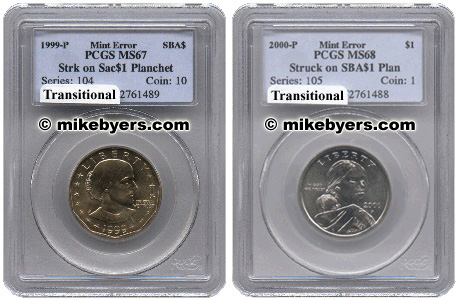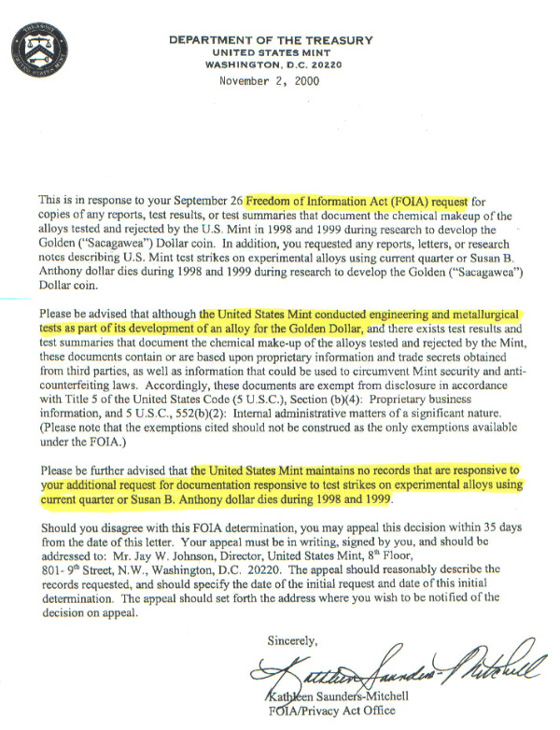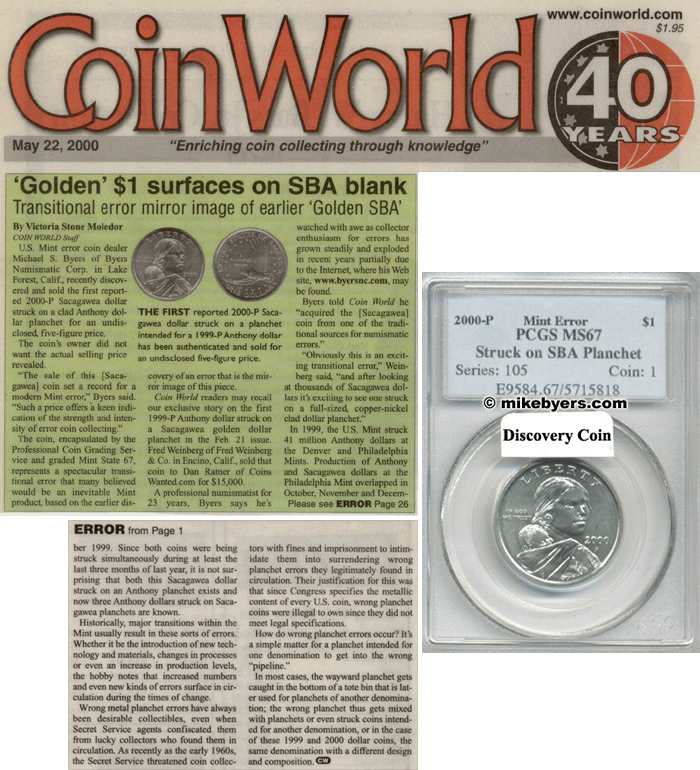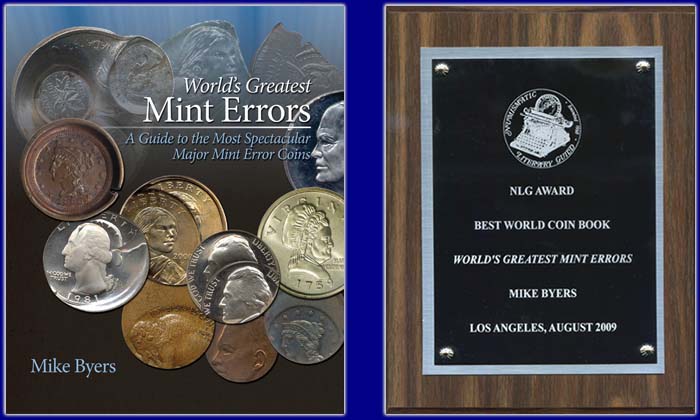PCGS MS 67 & MS 68
SOLD

Last year, Coin World reported a front page story regarding the discovery of State Quarters that were struck on experimental planchets. The article in the November 26, 2001 issue of Coin World describes, in detail, the four types of composition of these experimental planchets. The article also described the "tell tale" signs to determine if you have discovered a State Quarter on an experimental planchet in circulation.
These experimental State Quarters have sold for as high as $10,000 each, depending on which state, the coin's condition and which type of experimental composition was used. To date, there are approximately 15 known State Quarters on experimental planchets. All five states in the 1999 series (DE, PA, CT, GA and NJ) have been discovered.
Now...Four SBA Dollars struck on experimental planchets have been discovered!
These are the same type of planchets that were used when the 1999 Experimental State Quarters were struck.
One of these has the color of the Sacagawea Dollar but does not have the copper center core. Another has a slight "green" color and has the copper center core. The third piece has a slight "green" color but does not have copper center core. Here are some of the "tell tale" signs to determine if you have found a SBA Dollar on an experimental planchet in circulation:
WEIGHT - The weight of ALL of these discovered so far is UNDERWEIGHT - varying from 7.3 grams to 7.6 grams.
SIZE - It is slightly THINNER than a regular SBA Dollar, due to the lighter planchet.
COLOR - So far, the pieces discovered are either the same "color" of the Sacagawea Dollar, or have a slight "green" color to them.
LOOK - The edge is slightly rough and may have a higher rim around part of the edge.
EDGE - Some of these do NOT have the center COPPER CORE.
STRIKE - None discovered so far are proof-like in the fields.
REEDING - Some of these have incomplete reeding.
LINT MARKS - One of these has several lint marks on both the obverse and reverse.
A Freedom of Information Act (FOIA) request for copies of any reports and test results was submitted to the Department of the Treasury. They acknowledged that the U.S. Mint conducted engineering and metallurgical tests as part of its development of an alloy for the Golden Dollar, but would not release any information.
PCGS has authenticated all four known pieces to date. The specimen photographed here is a SBA Dollar with a slight "green" color and a copper center core.

Copyright story reprinted by permission from Page 1 and Page 26 of the
May 22, 2000 issue of COIN WORLD, Sidney, OH (coinworld.com)

Transitional Errors are featured in chapter 26
of my NLG Award winning book,
World's Greatest Mint Errors:





